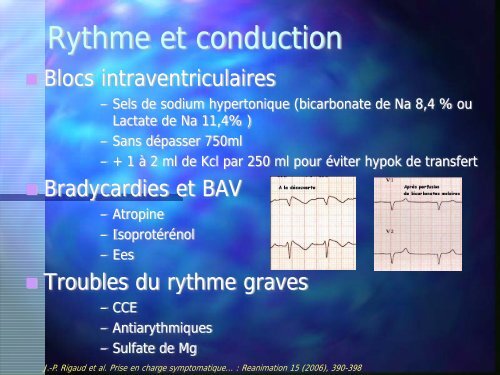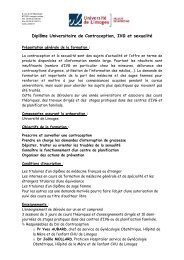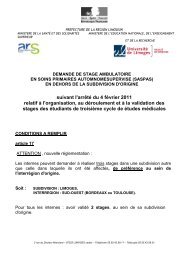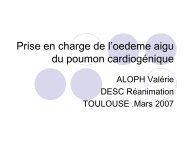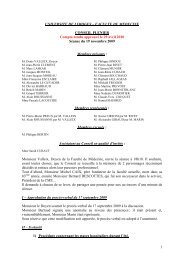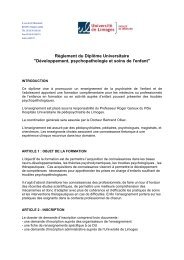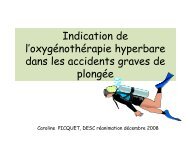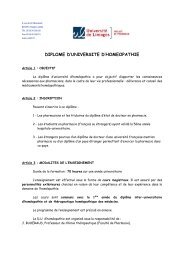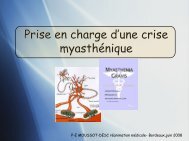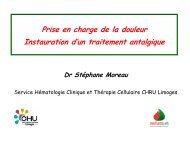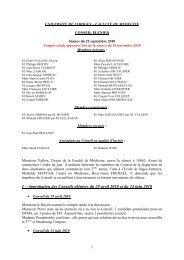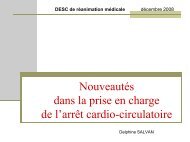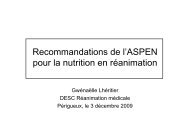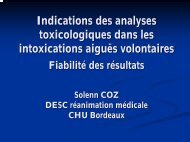Prise en charge des états de choc dans un contexte d'intoxication
Prise en charge des états de choc dans un contexte d'intoxication
Prise en charge des états de choc dans un contexte d'intoxication
- No tags were found...
You also want an ePaper? Increase the reach of your titles
YUMPU automatically turns print PDFs into web optimized ePapers that Google loves.
Rythme et conduction<br />
• Blocs intrav<strong>en</strong>triculaires<br />
– Sels <strong>de</strong> sodium hypertonique (bicarbonate <strong>de</strong> Na 8,4 % ou<br />
Lactate <strong>de</strong> Na 11,4% )<br />
– Sans dépasser 750ml<br />
– + 1 à 2 ml <strong>de</strong> Kcl par 250 ml pour éviter hypok <strong>de</strong> transfert<br />
• Bradycardies et BAV<br />
– Atropine<br />
– Isoprotérénol<br />
– Ees<br />
• Troubles du rythme graves<br />
– CCE<br />
– Antiarythmiques<br />
– Sulfate <strong>de</strong> Mg<br />
J.-P. Rigaud et al. <strong>Prise</strong> <strong>en</strong> <strong>charge</strong> symptomatique... : Reanimation 15 (2006), 390-398


